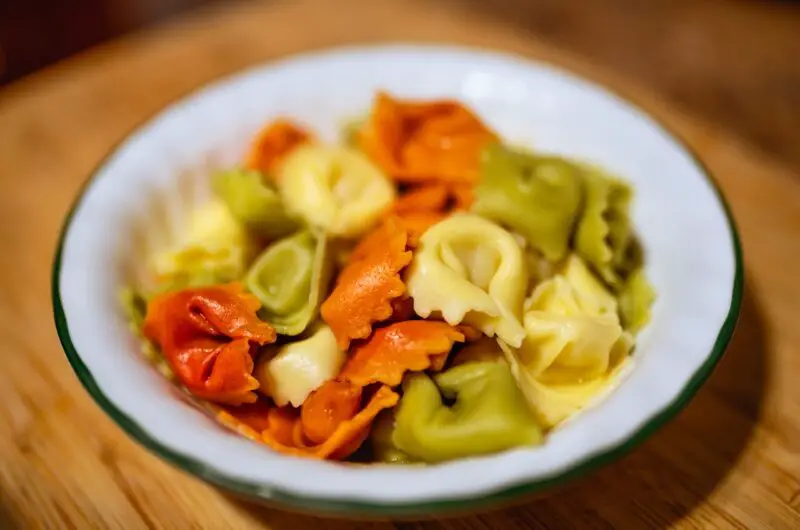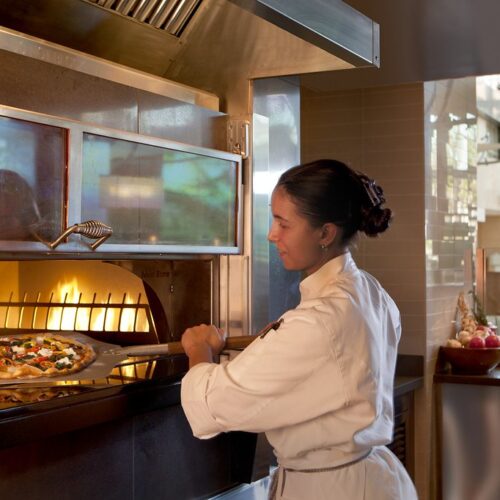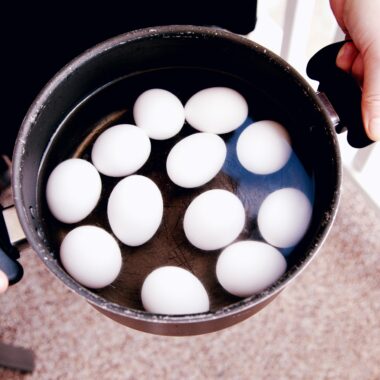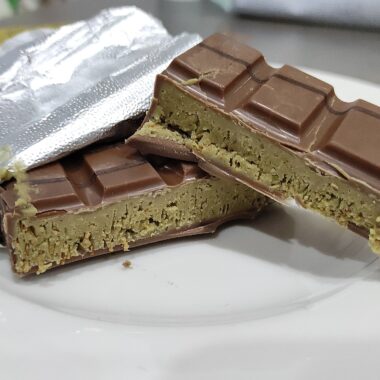Freezing cooked pasta can be a game-changer for meal prep, reducing waste and saving time. However, anyone who’s tried it knows the dreaded outcome: mushy, clumpy pasta that’s far from appetizing. The good news? With the right techniques, you can freeze cooked pasta without sacrificing its texture or flavor. This article dives into the science behind freezing pasta, practical tips to keep it al dente, and creative ways to use your frozen stash. We’ll cover everything from preparation to reheating, ensuring your pasta stays as delicious as the day it was cooked.
Why Does Pasta Go Mushy When Frozen?
To understand how to freeze pasta successfully, we need to grasp why it goes mushy in the first place. Pasta’s texture is largely determined by its starch structure and water content. When cooked, pasta absorbs water, swelling the starch granules. Freezing and thawing can disrupt this delicate balance, leading to a soft, soggy mess. Here’s what happens:
Moisture Retention: Cooked pasta retains water, and during freezing, this water forms ice crystals. Upon thawing, these crystals melt, releasing excess moisture that can make the pasta soggy.
Starch Breakdown: Repeated temperature changes can break down the starch structure, causing the pasta to lose its firmness.
Improper Cooking: Overcooked pasta is already soft, and freezing exacerbates this, amplifying the mushy texture.
Clumping: Without proper preparation, pasta strands or shapes stick together in the freezer, making it hard to separate without breaking.
The key to avoiding mushy pasta lies in controlling these factors through careful preparation, storage, and reheating methods.
Step-by-Step Guide to Freezing Cooked Pasta
Freezing cooked pasta without it turning mushy requires attention to detail at every stage. Follow these steps for optimal results.
- Cook the Pasta Al Dente
The first and most critical step is cooking the pasta to the right doneness. “Al dente” means the pasta is cooked but still firm to the bite. This firmness provides a buffer against the softening effects of freezing and thawing.
How to Do It: Boil your pasta according to the package instructions but reduce the cooking time by 1–2 minutes. For example, if the package suggests 10 minutes for spaghetti, cook it for 8–9 minutes. Test a piece by biting it; it should have a slight resistance in the center.
Why It Works: Al dente pasta has a tighter starch structure, which holds up better during freezing. Overcooked pasta is already too soft and will deteriorate further in the freezer.
- Cool the Pasta Quickly
Once cooked, you need to stop the cooking process and remove excess moisture to prevent the pasta from becoming gummy.
How to Do It: Drain the pasta immediately in a colander and rinse it briefly under cold running water for 20–30 seconds. Alternatively, plunge the drained pasta into a bowl of ice water for a minute, then drain again thoroughly.
Why It Works: Rinsing or shocking the pasta halts cooking, preserving the al dente texture. It also removes surface starch that can cause stickiness.
- Toss with a Light Coating of Oil
A thin layer of oil helps prevent the pasta from sticking together in the freezer, which is a common cause of clumping and uneven thawing.
How to Do It: Place the drained, cooled pasta in a large bowl and toss it with 1–2 teaspoons of neutral oil (like olive or vegetable oil) per pound of pasta. Ensure every piece is lightly coated but not greasy.
Why It Works: The oil creates a barrier between pasta pieces, reducing stickiness and helping maintain individual shapes during freezing.
- Portion and Package Properly
Proper portioning and packaging are crucial to maintaining texture and making the pasta easy to use later.
Portioning: Divide the pasta into single-serving or meal-sized portions (e.g., 1–2 cups per portion). This prevents you from thawing more than you need, which can lead to waste or texture issues.
Packaging Options:
Freezer Bags: Place portions in resealable freezer bags, pressing out as much air as possible before sealing. Lay the bags flat in the freezer to save space and ensure even freezing.
Airtight Containers: Use freezer-safe containers for smaller portions or delicate shapes like ravioli. Line the container with parchment paper to prevent sticking.
Flash Freezing (Optional): For shapes like penne or fusilli, spread the pasta in a single layer on a parchment-lined baking sheet and freeze for 1–2 hours. Once frozen, transfer to bags or containers. This prevents clumping.
Why It Works: Proper packaging minimizes air exposure, reducing freezer burn and moisture loss. Portioning ensures you only thaw what you need, preserving texture.
- Label and Freeze
Label each bag or container with the date and type of pasta. Freeze immediately at 0°F (-18°C) or lower.
How to Do It: Use a permanent marker to note the contents and date. Pasta can be frozen for up to 1–2 months for best quality, though it’s safe to eat beyond that.
Why It Works: Labeling helps you track storage time, as texture and flavor degrade slightly over time. A consistent freezer temperature prevents ice crystal formation.
Best Types of Pasta for Freezing
Not all pasta shapes freeze equally well. Sturdy shapes hold up better than delicate ones due to their structure and thickness.
Best Choices:
Short Pastas: Rigatoni, penne, fusilli, and farfalle are excellent because their compact shapes resist breaking and maintain texture.
Long Pastas: Spaghetti, linguine, and fettuccine freeze well if properly coated with oil to prevent sticking.
Tricky Choices:
Stuffed Pastas: Ravioli and tortellini can freeze well but require extra care to prevent cracking or sticking. Flash freezing is recommended.
Delicate Pastas: Thin pastas like capellini or orzo can become mushy and are better used fresh.
Pro Tip: Whole wheat or gluten-free pastas may have slightly different textures after freezing due to their unique starch compositions. Test a small batch first.
How to Thaw and Reheat Frozen Pasta
Thawing and reheating are where many go wrong, turning perfectly frozen pasta into a mushy disappointment. Here’s how to do it right.
Thawing Options
Refrigerator Thawing: For the best texture, thaw pasta in the refrigerator overnight. Place the bag or container in a bowl to catch any condensation.
Quick Thaw: If you’re short on time, place the sealed freezer bag in a bowl of cold water for 30–60 minutes. Avoid warm water, as it can start cooking the pasta unevenly.
No Thaw (Best for Sauces): For pasta destined for a hot dish (like a casserole or sauce), you can add it directly to the pan or oven without thawing.
Reheating Methods
The goal is to reheat gently to avoid overcooking, which can turn the pasta mushy.
In a Sauce:
Add frozen or thawed pasta directly to a simmering sauce (e.g., marinara, Alfredo, or pesto) over medium heat.
Stir gently for 2–5 minutes until heated through. The sauce adds moisture and flavor, helping the pasta regain its texture.
Boiling:
Bring a pot of water to a boil and add the frozen pasta for 30–60 seconds, just until warmed. Drain immediately.
This method works best for plain pasta you plan to toss with a cold dressing or light sauce.
Microwave:
Place thawed pasta in a microwave-safe dish with a splash of water or sauce. Cover loosely and microwave on medium power in 30-second intervals, stirring in between, until heated.
Avoid high power to prevent uneven heating and mushiness.
Oven (for Casseroles):
For baked dishes like lasagna, add frozen pasta directly to the casserole with extra sauce or cheese to keep it moist. Cover with foil and bake at 350°F (175°C) until heated through, about 20–30 minutes.
Why It Works
Gentle thawing and reheating preserve the pasta’s starch structure. Adding moisture (like sauce or a splash of water) prevents dryness, while quick reheating avoids overcooking.
Tips for Freezing Pasta Dishes
If you’re freezing pasta already mixed with sauce or in a dish, the approach changes slightly:
Saucy Pastas: Creamy or tomato-based pasta dishes (e.g., spaghetti Bolognese or mac and cheese) freeze well because the sauce protects the pasta from freezer burn. Use freezer-safe containers and leave a half-inch of headspace for expansion.
Baked Dishes: Assemble casseroles like lasagna or baked ziti in freezer-safe dishes, cover tightly with foil, and freeze before or after baking. If freezing unbaked, add 10–15 minutes to the baking time when reheating.
Avoid Freezing: Delicate sauces (like oil-based pestos) or dishes with high-water-content vegetables (like zucchini) can become watery or lose flavor.
Creative Uses for Frozen Pasta
Frozen pasta isn’t just for reheating with sauce. Here are some creative ideas:
Pasta Salads: Thaw short pasta shapes and toss with vinaigrette, vegetables, and protein for a quick salad.
Stir-Fries: Add thawed pasta to a hot wok with vegetables and soy sauce for an Asian-inspired dish.
Frittatas: Mix thawed pasta with eggs, cheese, and veggies, then bake for a hearty frittata.
Soups: Toss frozen pasta into simmering broth for a quick noodle soup.
Common Mistakes to Avoid
Overcooking Initially: Always aim for al dente to start.
Skipping the Oil: Without a light oil coating, pasta sticks together in the freezer.
Poor Packaging: Airtight packaging is non-negotiable to prevent freezer burn.
Overheating: Reheating too long or at high temperatures ruins the texture.
FAQs About Freezing Cooked Pasta
How long can I freeze cooked pasta?
Up to 1–2 months for optimal texture and flavor, though it’s safe indefinitely if stored properly.
Can I freeze pasta with sauce?
Yes, saucy pastas freeze well, but avoid freezing delicate or watery sauces.
Do I need to thaw pasta before reheating?
Not always. For saucy dishes or casseroles, you can reheat directly from frozen.
Can I freeze gluten-free pasta?
Yes, but test a small batch, as some gluten-free pastas become grainy after freezing.
Conclusion
Freezing cooked pasta without it going mushy is entirely possible with the right techniques. By cooking al dente, cooling properly, tossing with oil, and packaging carefully, you can preserve pasta’s texture and flavor. Whether you’re meal prepping or saving leftovers, frozen pasta can be a versatile ingredient for quick meals. With proper thawing and reheating, your pasta will taste nearly as good as fresh, saving you time and reducing waste. So go ahead—cook a big batch, freeze it right, and enjoy perfectly textured pasta whenever you need it.


















